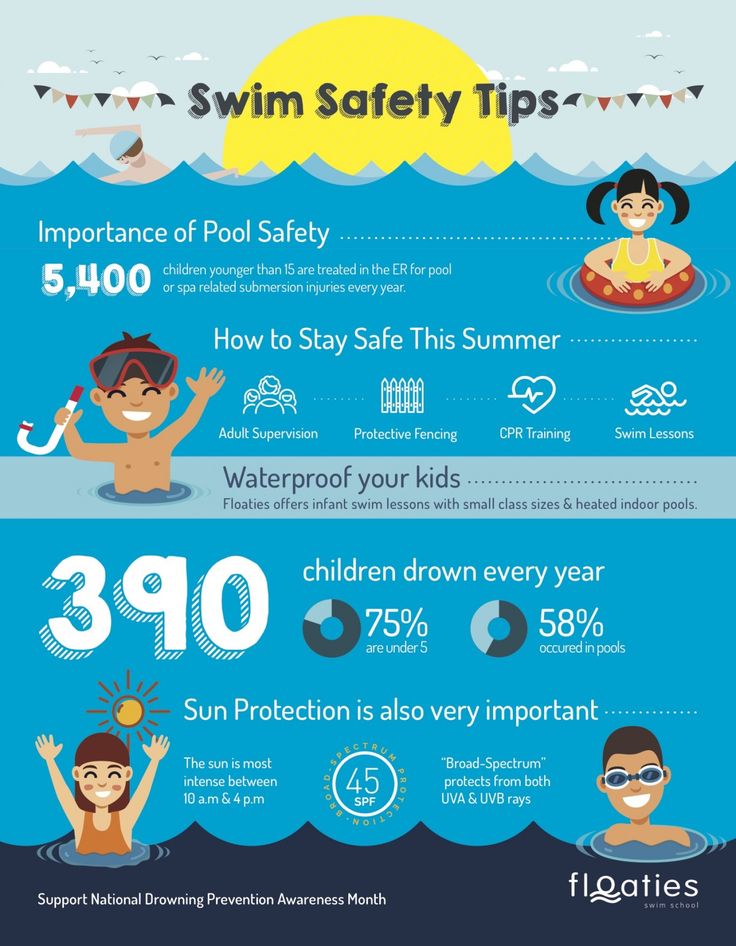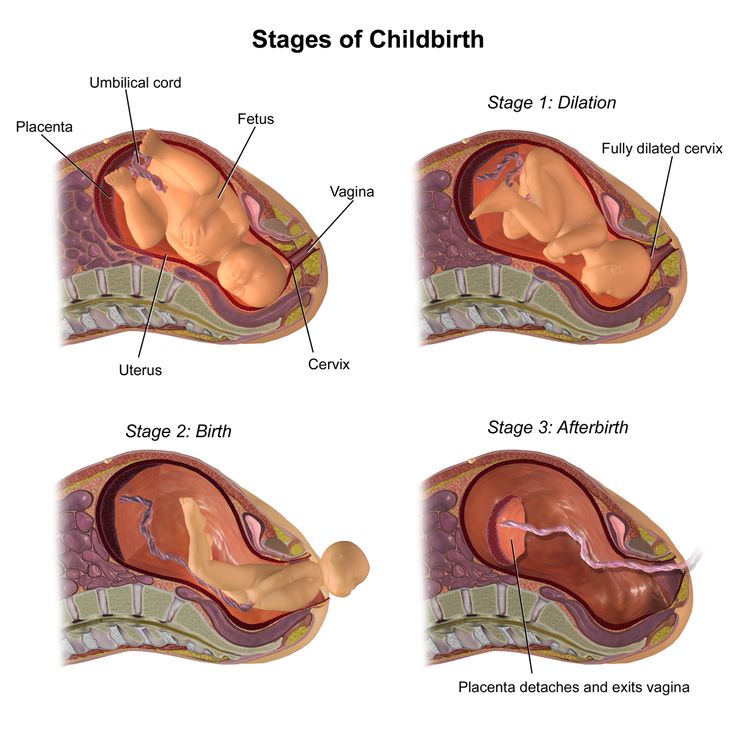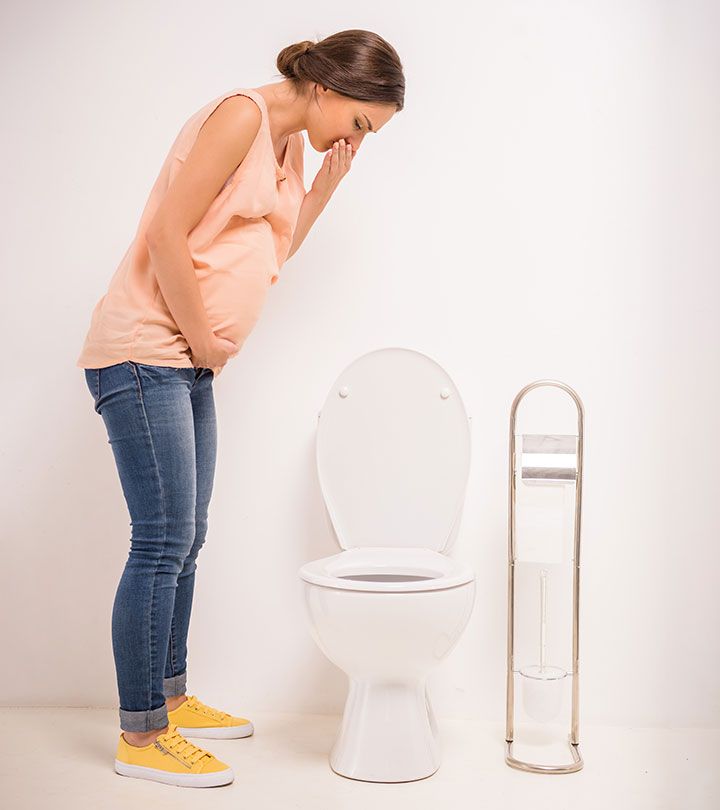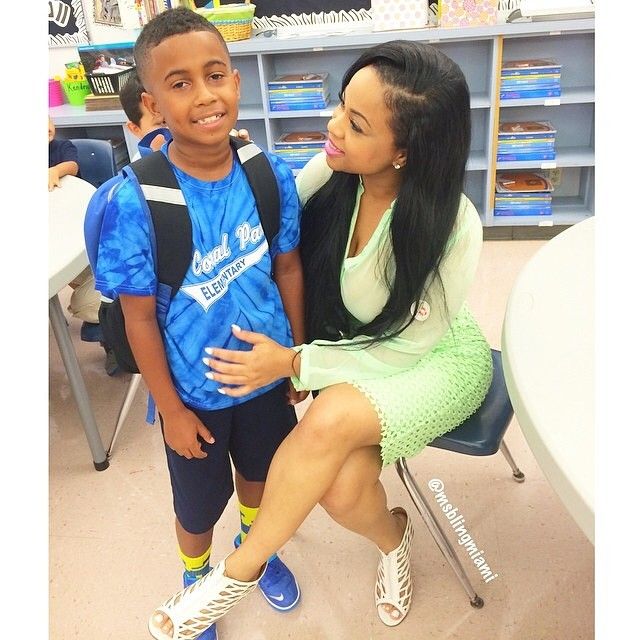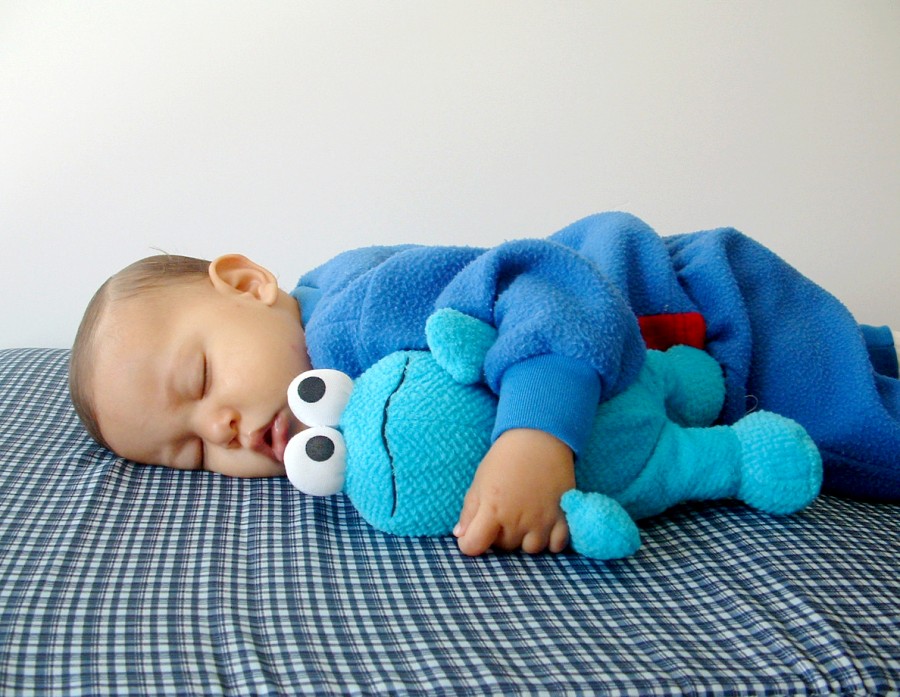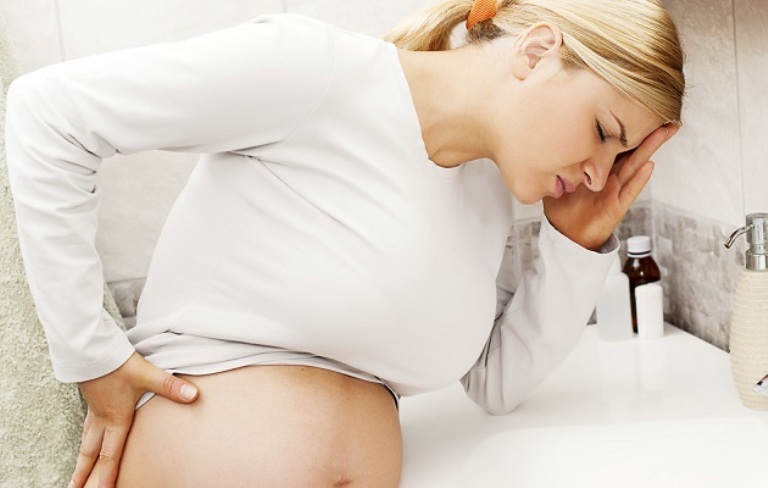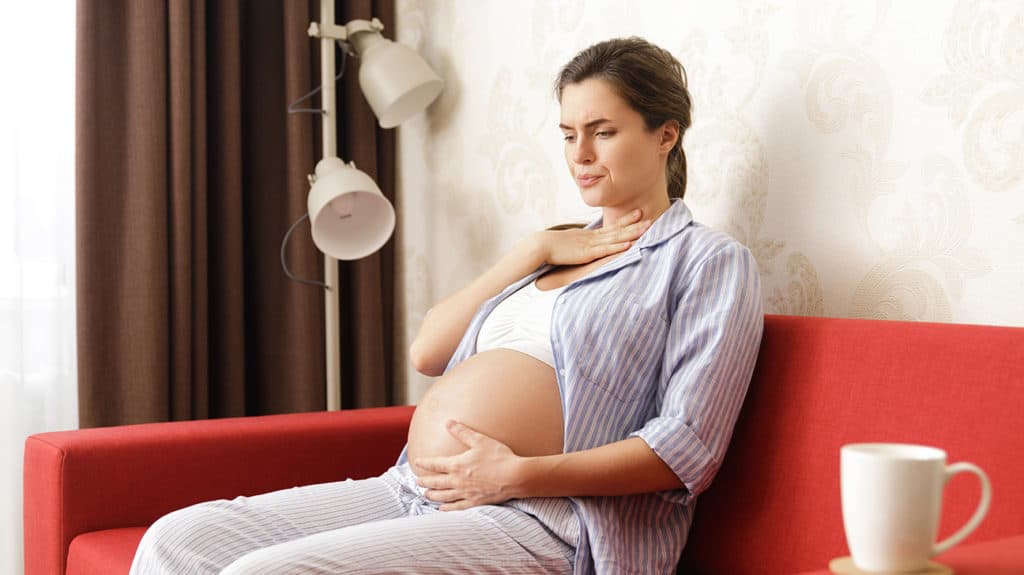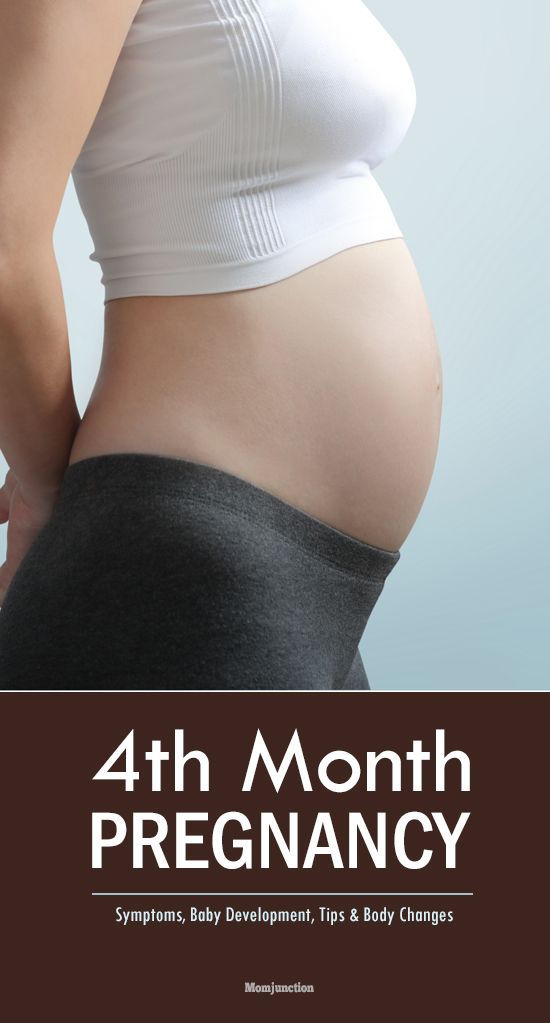How much water can a child drown in
Water Safety for Children Birth to 5 Years
You can download this article as a PDF (English, Spanish).
Drowning is the leading cause of unintentional death in children ages 1 to 4. Children under 5 most often drown in swimming pools and bathtubs. Drowning often happens at times when caregivers hadn’t planned for the child to be in the water.
Parents may think that if their child falls in the water they will hear lots of splashing and noise and they will be able to get to their child. In most cases, children slip under quickly and in silence.
Supervision and a life jacket are 2 of the most important things you can provide to protect your child from drowning.
At home
Babies and young children can drown in as little as 2 inches of water. Hundreds of children have drowned in bathtubs, garden ponds, toilets and 5-gallon buckets.
- Always watch toddlers when in the bathroom.
- Never leave a baby or toddler alone or in the care of another young child while in the bathtub, pool, spa or wading pool.
- Bath seats can tip over and cause a baby to slip out. Only use them with close adult supervision.
- Store buckets empty and out of reach when not in use.
In the yard
- Keep garbage cans covered.
- Store buckets empty and out of reach.
- Avoid having a garden pond. If you do have one, put a fence around it to keep your child away.
- Empty the wading pool when not in use.
In and near the water
Start good water safety habits early, while it’s easier.
- Put your child in a life jacket when playing in or near the water, on a dock or in a boat, raft or inner tube.
- In all types of water, stay within touching distance of your child at all times.
- At social events, take turns with other adults being the “water watchers” to watch children in or near the water.
- While watching children near water, adults must keep constant focus on the children and avoid doing things that could distract you such as talking, reading or looking at your phone.

- Buy a life jacket for your child. There may not always be one to rent or borrow. Some swim suits come with built in life jackets. Check the label to make sure it is U.S. Coast Guard approved.
- Talk with your childcare provider to find out if your child will be going on outings near or in the water. Ask about supervision around the water. Provide a life jacket for your child if needed.
- Infant and toddler water classes promote water safety and play, but they do not replace supervision. Most children are ready for swim lessons at about age 4. Some 1- to 4-year-olds are ready to learn to swim. No matter the age, swim lessons do not provide “drown-proofing.”
- Teach your child to wait for your “OK” before getting into the water.
- Choose areas with lifeguards for swimming and playing. Even with a lifeguard, you will need to watch closely.
- Water wings, rafts or plastic rings are not designed to keep swimmers safe. Never use them in place of a life jacket.

If you have a pool or hot tub
Mishaps can happen just outside your door, so use many layers of safety to protect your child. These include barriers, fencing, alarms, safety covers and rescue gear.
All pools pose a drowning risk. Soft-sided inflatable pools have the same risks as in-ground pools. Young children can get into them with ease and have trouble getting out.
- Enclose pools on all 4 sides with a fence at least 4 feet high and an entrance that has a self-closing, self-latching gate. Make sure the fence is hard to climb to further prevent a child from getting in without help. Get detailed guidelines on fencing from poolsafely.gov.
- Add a power safety cover, alarms on doors leading to the pool and a pool alarm. Safety covers are not a substitute for a fence.
- Learn infant and child CPR.
- Cover hot tubs when not in use.
- Use drain covers, safety vacuum release systems (SVRSs) or filter pumps with multiple drains to prevent children from getting entrapped in drains.

- If your child has long hair, use hair bands to keep hair away from the suction drain covers.
- Keep a phone right by the pool. Add emergency phone numbers to your contacts and post the numbers near the pool as well.
- Keep rescue gear such as a life buoy, life jackets and a reach tool (shepherd’s crook) next to the pool.
- Remove toys from in and around the pool when it is not in use. Toys attract children to the pool.
On vacation
Vacations often happen in places where children have access to pools, hot tubs and open water.
- Bring your family’s life jackets on vacation.
- The change in routines makes it easy for a child to slip away unnoticed. Keep young children in sight at all times when water is nearby.
- If a child is missing, check the pool first.
Drowning Prevention for Curious Toddlers: What Parents Need to Know
Many toddlers―curious, active and eager to explore their surroundings―are attracted to water. It shines, ripples, splashes, and can even make things float! But, they don't understand that water can be dangerous and aren't old enough yet to do what is needed when in trouble. So, it's essential to protect them from water hazards where you live and where you visit.
It shines, ripples, splashes, and can even make things float! But, they don't understand that water can be dangerous and aren't old enough yet to do what is needed when in trouble. So, it's essential to protect them from water hazards where you live and where you visit.
The toddler years = higher drowning risk than any other time
Water safety is important for all ages, but especially for toddlers. Drowning is the leading cause of injury death in children 1-4. Young children can drown in as little as an inch or two of water, and it can happen quickly and silently.
The biggest drowning threat facing families with toddlers is unexpected, unsupervised access to water: swimming pools, hot tubs and spas, bathtubs, natural bodies of water such as ponds, and standing water in homes. For example, 69% of all drownings among children age 4 and younger happen during
non-swim times.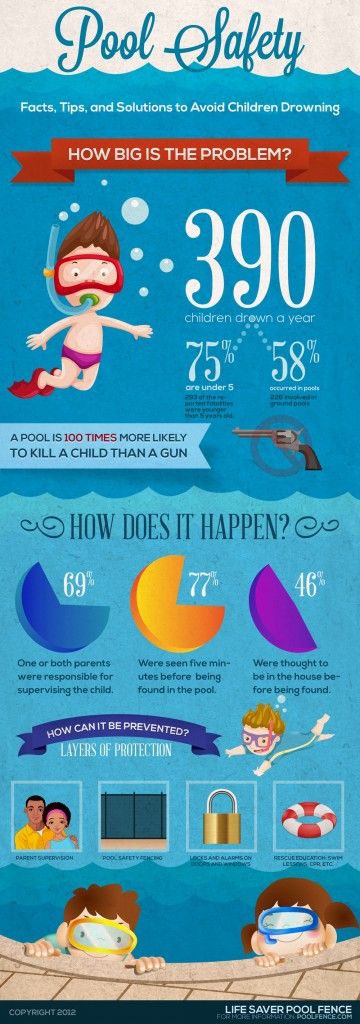
Create layers of protection to keep your toddler safe
To lower the risk of drowning and other water-related injuries to children, the American Academy of Pediatrics (AAP) recommends using "layers" of protection. When children are not expected to be around the water (non-swim times), barriers can help prevent tragedies during inevitable, brief lapses in supervision which are a normal part of every day. When children are playing in and around water, close and constant supervision become essential.
Check for water dangers at home and where you visit
Preventing unintended, unsupervised access to water is proven to be one of the most effective ways to reduce drowning deaths among young children. Start with these layers of protection in and around your
home to help make your toddler's environment safer.
Research suggests that fencing can prevent more than half of all swimming pool drownings of young children.
Swimming pools, including large, inflatable above-ground pools and other temporary pools, should be completely surrounded by a fence on all 4 sides. The fence should:
Keep the gate locked at all times and check it frequently to be sure it works. Keep toys out of the pool area when not in use so that children are not tempted to try to get through the fence during non-swim time. Also be sure to always cover and lock hot tubs, spas and whirlpools right after using them.
Bird baths, fountains, and ponds. Although these can be beautiful landscape features, consider holding off on installing or using them until your child is older.
Wells, irrigation, or drainage ditches. Also be careful to prevent children's access to open post holes while structures like fences, decks, birdhouses and flagpoles are being put in.
Use safety gates, door locks or doorknob covers to prevent your toddler from going outside or into your garage unnoticed.
Make sure siblings and all other family members know to always close the door behind them so younger children don't follow them out.
Never leave a filled, open-top water container unattended. Whenever they're not in use, be sure to completely empty any liquids in containers such as:
The bathroom can be a risky place for toddlers. They can topple headfirst into toilet bowls and filled tubs, or scald themselves with water that's too hot. Use safety latches or doorknob covers to keep bathrooms closed when they're not in use. As an added layer of protection, install latches or locks on toilet seat lids, and consider removing the bath tub drain plug when it's not in use to avoid the tub filling if a child turns on the faucet.
Provide close, constant supervision in and around water
Whenever your toddler is in or near water, give them your undivided attention. It's important to avoid doing anything that would make it hard to stay focused, such as using your cell phone, doing yard work, or drinking alcohol.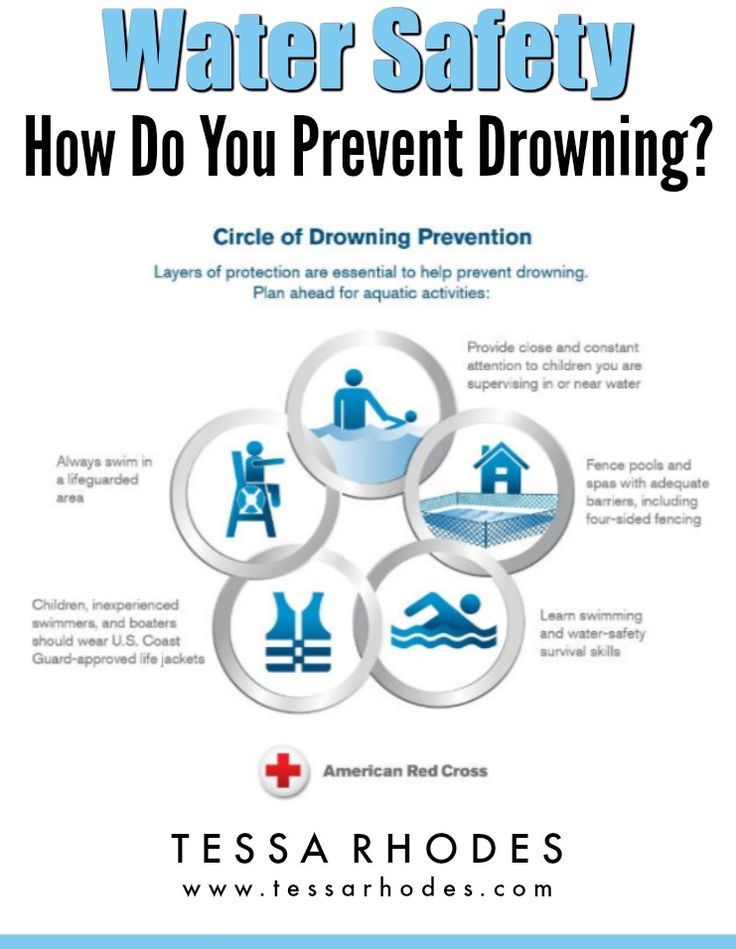
The AAP recommends staying within arm's length, providing constant "touch supervision," whether it's bath time or swim time. Most child drownings inside the home occur in bathtubs, usually during a lapse in adult supervision. During swim time, get in the water with your toddler. If you need to get out, take your child with you, even if lifeguards are present.
Especially during parties or picnics at the pool or lake, when it's easy to get distracted, assign a "water watcher" to constantly keep eyes on the child. Take turns, passing along a water watcher card to the next responsible adult after a set time (such as 15 minutes).
Children should always wear life jackets when in, on, or near natural bodies of water, such as lakes or rivers. Make sure they fit properly and are approved by the US Coast Guard. Children and others who lack strong swim skills should also wear life jackets when at a pool or water park.
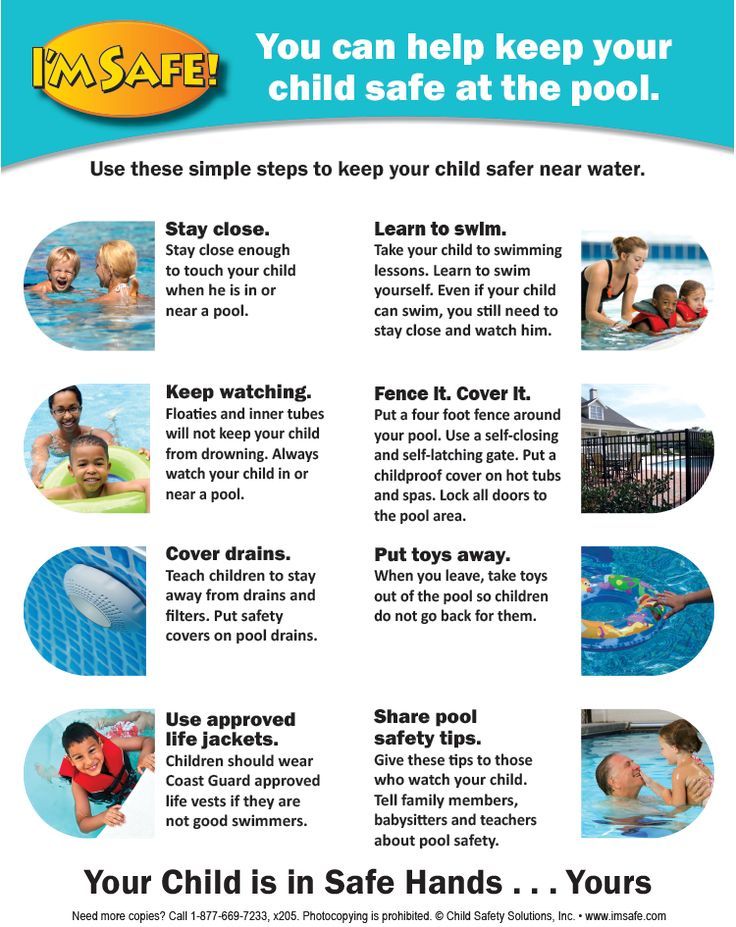
Start swim lessons as soon as your child is ready
The AAP recommends swim lessons for all children, and their parents, as another layer of water safety. Recent studies suggest that water survival skills training and swim lessons can help reduce drowning risk for all children including those 1 to 4 years. Deciding when to start should be based on a variety of individual factors, including how often your child may be around water, your child's emotional maturity, physical and developmental abilities and limitations, interest in learning to swim, and how comfortable he or she is in the water. Your pediatrician is a good resource to help know if your toddler is ready. |
Be ready to respond
Know how to respond when there is trouble. Everyone, including parents, caregivers and older children, should
learn CPR and safe rescue techniques to respond to a drowning incident.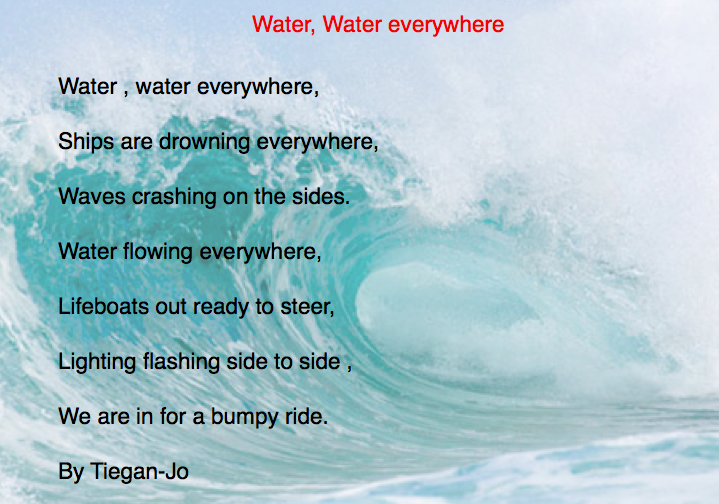 Water safety is a family affair!
Water safety is a family affair!
Remember
Always keep your toddler's safety in mind around water―at home, where your friends, relatives, and caregivers live, and places you stay during family trips. Prevent unsupervised access during non-swim times and provide close, constant supervision while in or around water. Be sure to talk with your pediatrician at your child's wellness visits about guarding against common water dangers.
Additional Information
Swim Lessons: When to Start & What Parents Should Know
Infant Water Safety: Protect Your New Baby from Drowning
Pool Dangers and Drowning Prevention―When It's Not Swimming Time
Keep Kids with Autism Safe from Wandering: Tips from the AAP
AAP Drowning Prevention Campaign Toolkit
The information contained on this Web site should not be used as a substitute for the medical care and advice of your pediatrician.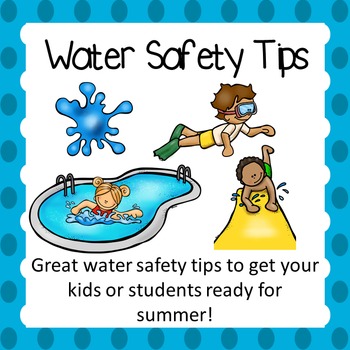 There may be variations in treatment that your pediatrician may recommend based on individual facts and circumstances.
There may be variations in treatment that your pediatrician may recommend based on individual facts and circumstances.
What all parents should know about children's water safety
A drowning child looks nothing like it is shown in Hollywood movies.
According to WHO, drowning is the third leading cause of death from unintentional injuries. First of all, children 1-4 years old are at risk, followed by children 5-14 years old. Most often, tragedies occur in the summer.
Where can a child drown?
Anywhere. This does not always happen in deep waters. "A small child can drown even in a glass."
If there is enough water in a container for a child to dip his face in, it is already dangerous. First of all, this applies to the age of 1-4 years. Babies drown in buckets, basins, puddles, garden barrels, and even pet drinkers. If a child is only chest-deep or waist-deep in a pool of water, he can still drown. There are cases when unattended school-age children drowned in the bath, although there was just nothing there.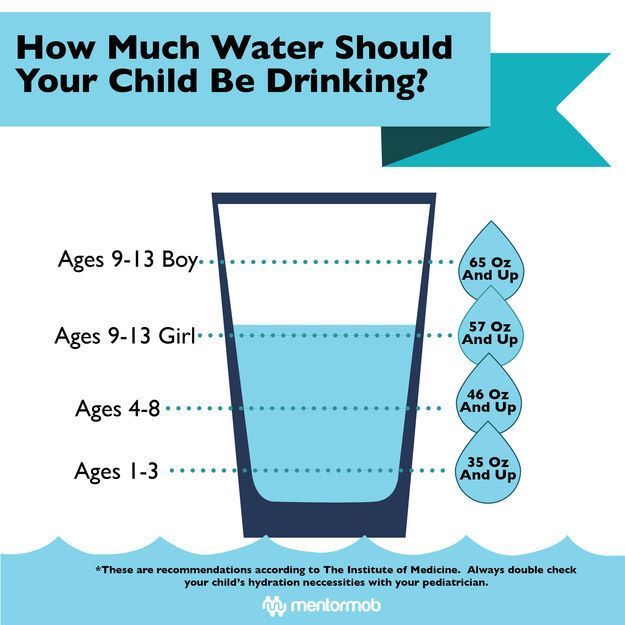
How do you know if a child is drowning?
First of all, forget the shots from Hollywood movies. The child does not flounder or scream, he just drowns quietly and quickly, usually within 30 seconds. All the efforts of the respiratory system are aimed at getting a breath of oxygen, so there will be no loud screams. Instead of waving his arms, a drowning person tries to push them off, from the outside it looks like a game. Often, when a child is drowning, parents are very close and do not understand that the baby needs help. This is impossible to understand if you do not know what drowning really looks like. Remember the main signs.
- Mouth at or below water level, or wide open with head thrown back.
- "Glass", "empty" look.
- The legs are usually not visible because the drowning person's body is in an upright position.
- The child's hair falls on his face, eyes, and he does not try to brush it off.
- The child tries to swim in a certain direction, but remains in place.

- The child tries to roll over on his back, but fails.
- If you do not understand whether the child is drowning or just playing, ask him if everything is all right. Doesn't answer? There is no time to think: quickly pull him out of the water.
First Aid
Once you have taken the child out of the water, check to see if he is conscious. If conscious, hug and comfort. If the child does not respond and does not react to anything, check if he is breathing, if his heart is beating. Put your ear to your chest, check the pulse on your neck, put a mirror to your nose and mouth, check if it is foggy. For everything about everything, you have somewhere five seconds .
No breathing or pulse - call an ambulance immediately and proceed with cardiopulmonary resuscitation (chest compressions and artificial respiration).
Minutes count.
A child under one year of age should be laid on its back with its head tilted back and the mouth open by pressing on the chin. Put your lips around his mouth and nose, exhale into his lungs, repeat again. Then put your index and middle fingers together, place them in the center of your chest just below the level of your nipples and press quickly - 30 times in 15 seconds. Repeat artificial respiration and heart massage in the same pattern until the child begins to breathe or until the ambulance arrives.
Put your lips around his mouth and nose, exhale into his lungs, repeat again. Then put your index and middle fingers together, place them in the center of your chest just below the level of your nipples and press quickly - 30 times in 15 seconds. Repeat artificial respiration and heart massage in the same pattern until the child begins to breathe or until the ambulance arrives.
If the child is older than one year, the steps will be similar, but artificial respiration is carried out using the mouth-to-mouth method, and the nose must be pinched. An indirect heart massage is performed not with fingers, but with the base of the palm. It must be installed approximately at the level of the nipples, in the middle. For a small child, heart massage can be done with one hand, for a large child with two.
The main safety measure is constant supervision
Most often, children who are left without supervision drown. Even if there are many adults near the pond, this still does not guarantee safety.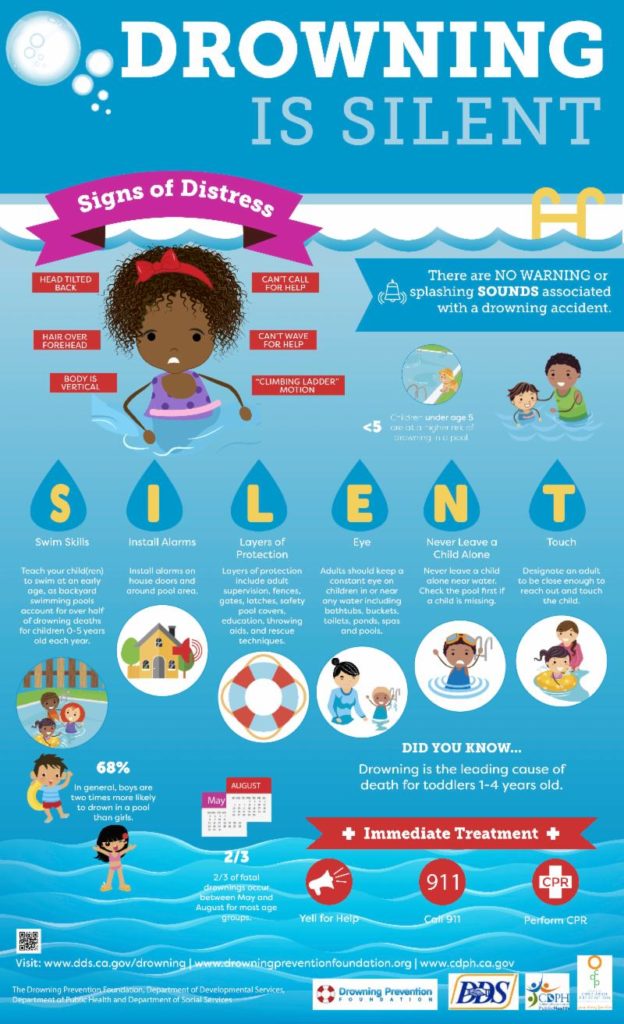 First, not all people know the signs that a child is drowning. They can stand nearby and calmly watch how the baby "plays" in the water.
First, not all people know the signs that a child is drowning. They can stand nearby and calmly watch how the baby "plays" in the water.
Secondly, when there are many adults, everyone and at the same time no one is watching the children. Everyone hopes for the others.
Therefore rule number one: at least one adult should be nearby, in the water, and only look after the child. You can't be distracted by anything. Five seconds to view messages on the phone - and the tragedy has already occurred. Even if the child can swim, one of the adults should be nearby. If there are several children in the pond, they need to be introduced to each other and explained that everyone should periodically check if their friends are nearby, if everything is in order. The child must clearly know the rules of behavior near water bodies and the pool.
Teach your child to swim
Parents decide at what age to start. Better as soon as you feel that your child has matured psychologically and physically.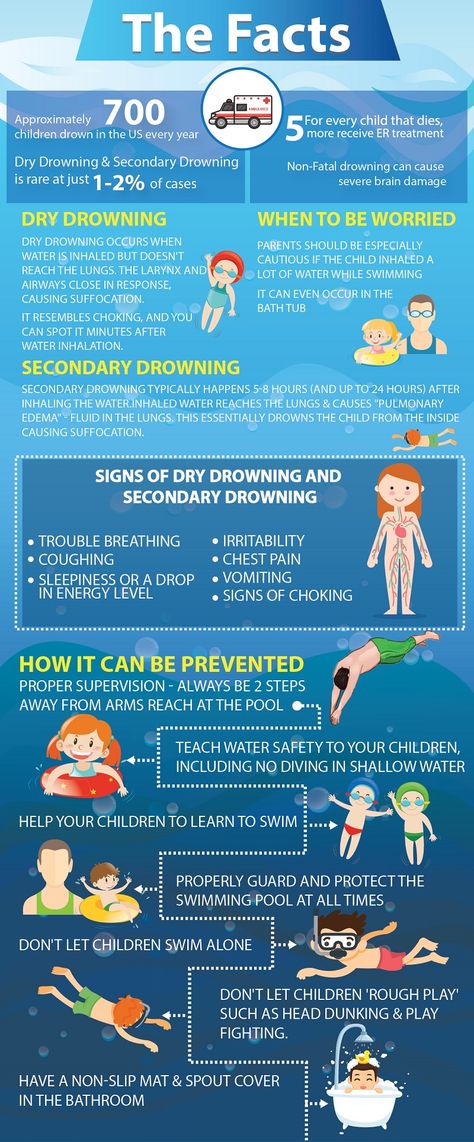 You can teach him to swim on his own, but it is better to enroll in a special section where a professional instructor will deal with him.
You can teach him to swim on his own, but it is better to enroll in a special section where a professional instructor will deal with him.
Wear a vest and sleeves
Special vests and sleeves can save your child's life. You must use them, but you should not rely on them completely. The first step is constant supervision.
St. Petersburg State Pedagogical University “Fire-rescue squad of the Petrograd district”
Territorial department of the Ministry of Emergencies in the Petrograd district
24.10.2022
Control. ! Keep your children safe
March 16, 2016
The top sources of child injury are, in descending order: traffic accidents in which children are involved as passengers, pedestrians and cyclists; fires and burns; water accidents; suffocation; poisoning; blockage of the airways; accidents from careless handling of weapons; falling children from a height.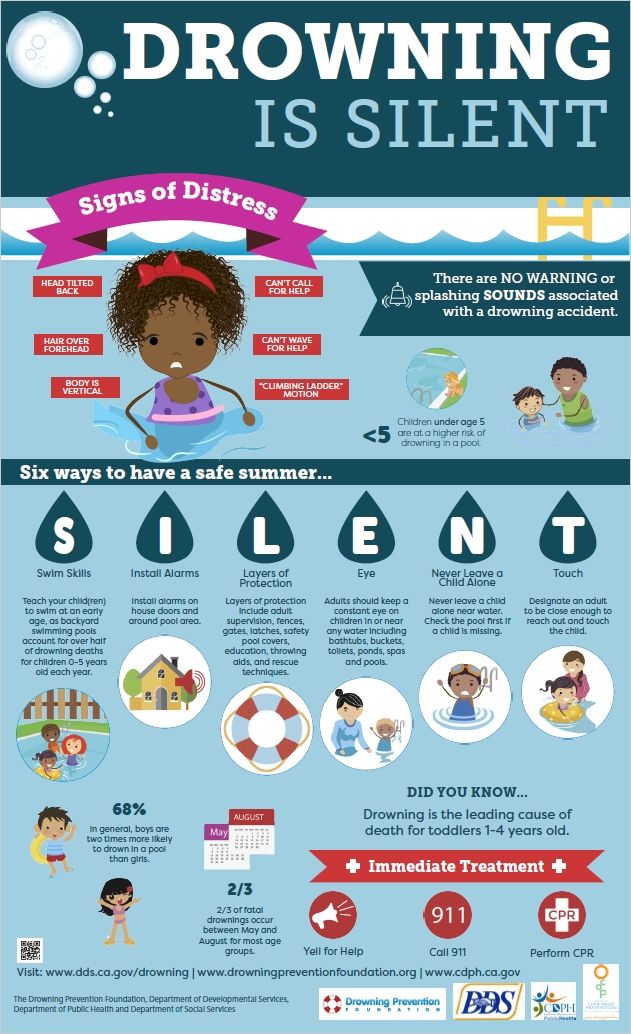
Most of the incidents that are commonly referred to as accidents are injuries that could have been avoided. Even when accidents cannot be prevented, the resulting injuries can still be avoided. These simple measures can prevent most tragedies.
Make the environment safe for your child. In order to identify and prevent any hazard, it is necessary to carefully familiarize yourself with your surroundings. To prevent injury, remove all dangerous objects that a child can reach. Start teaching your child about safe behavior, change dangerous environments that can lead to injury: coffee tables with sharp corners, stairs without railings, furniture and beds that are directly adjacent to open windows.
Pay special attention during stressful situations. Try to always remember where you left the scissors, razor, hedge clipper, and any other sharp object that you used before you were distracted from the work you were doing.
Keep an eye on your child .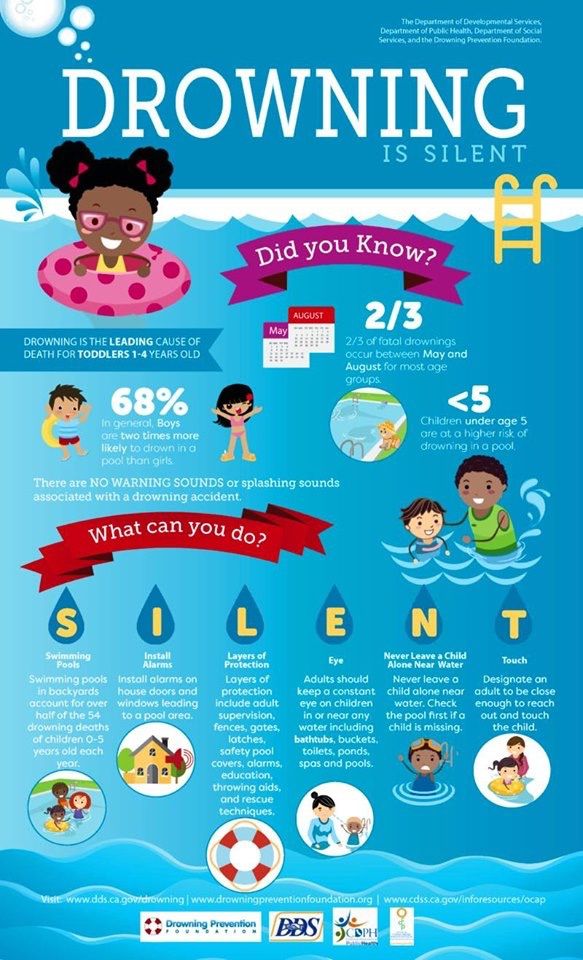 The second principle of injury prevention is constant supervision of the child. Even in a safe environment, children, especially young children, need constant supervision. Children who begin to walk are at particular risk and need adult protection.
The second principle of injury prevention is constant supervision of the child. Even in a safe environment, children, especially young children, need constant supervision. Children who begin to walk are at particular risk and need adult protection.
Burns. Doctors report that coffee burns are common. Never drink hot coffee or tea with a small child in your arms. Make sure that cups of hot coffee are not placed on the edge of the table where the baby can reach them.
Do not use tablecloths or napkins that can be pulled off the table by a small child.
Never heat a baby bottle in the microwave. The milk may be very hot and the sides of the bottle cold to the touch.
Always turn kettle handles towards the back of the stove. Rear burners should be preferred.
Keep matches out of the reach of children. Around the age of four, many children cannot resist the temptation to play with matches.
Open heaters, stoves, fireplaces, unenclosed dryers, easily opened braziers are a particular hazard. Install grills or barriers around stoves, fireplaces, and heaters. Talk to young children about fire and warn them not to touch hot objects.
Install grills or barriers around stoves, fireplaces, and heaters. Talk to young children about fire and warn them not to touch hot objects.
Be careful that curtains, bedspreads and towels do not come into contact with heaters as this may cause a fire.
Replace worn electrical wires. Carefully insulate wire connections and extension cords.
Insert plugs into all socket outlets to prevent children from being electrocuted by inserting anything into socket openings.
Talk to the children about fire safety and give them the necessary instructions.
Water deaths and safety measures
More than 1,000 children under the age of fourteen drown every year. Death on the water in terms of the number of deaths ranks second in this age group. For every child who drowns, four are rescued and taken to hospital. Children under the age of four are two or three times more likely to drown than children in other age groups.
The main cause of death in preschool children is bathing.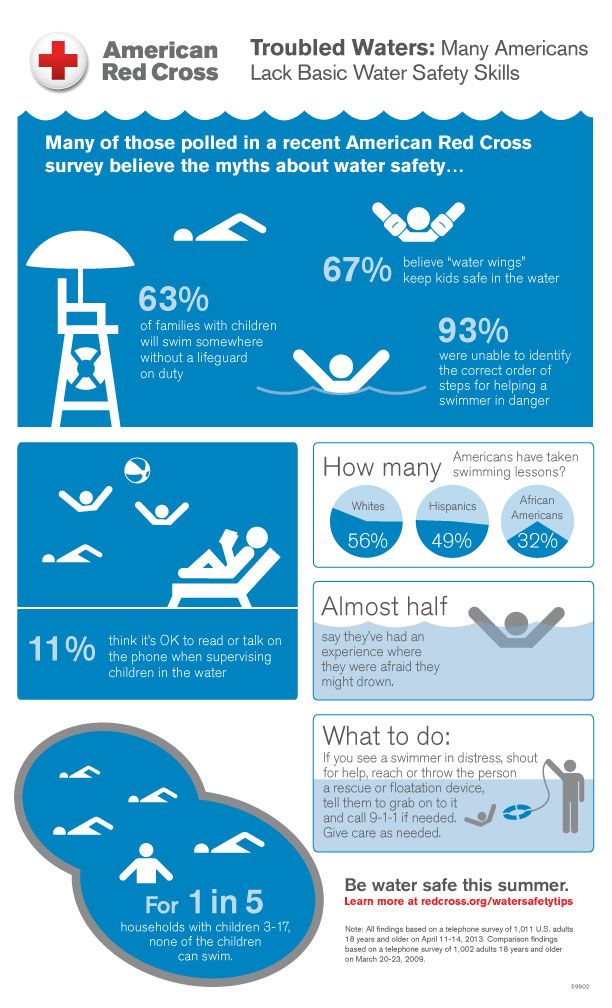 Do not leave 20-liter water containers in the yard, as they can fill with rainwater and the child may drown if he falls into it. Close the toilet with a lid. The child may fall face down into the toilet or into a bucket of water and choke.
Do not leave 20-liter water containers in the yard, as they can fill with rainwater and the child may drown if he falls into it. Close the toilet with a lid. The child may fall face down into the toilet or into a bucket of water and choke.
Water safety.
1. Never leave a child under the age of five alone in the bathroom. A child can drown even in a small amount of water. Do not leave it in the bathroom and under the supervision of another child under the age of twelve. If you need to answer the phone or go to the front door, wrap your child in a towel and take them with you in the stroller.
2.Children should learn to swim, but don't assume they have already received water safety guarantees even if they have taken swimming lessons. Don't rely on pool alarms: they will only go off when the child falls into the water, help often arrives too late.
3. Keep an eye on your child when he is near water. The best rule of thumb is: PPE should be worn on a child at a beach, lake, boat, near a shallow body of water or a pool until the children are able to swim four hundred meters.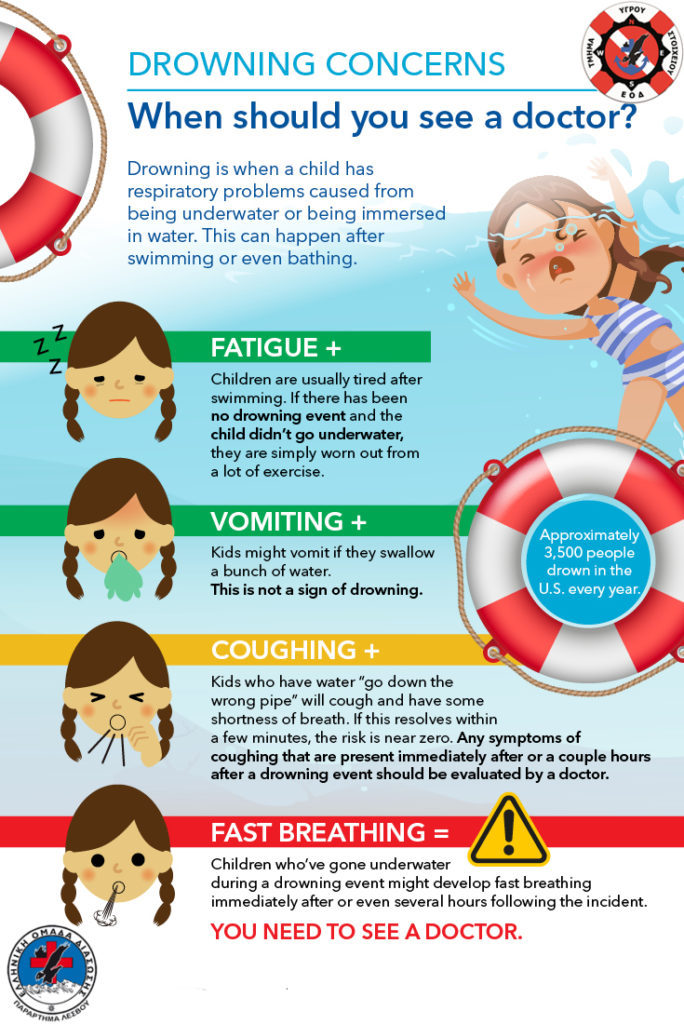 When your child is a real swimmer by the age of ten or twelve, in order to avoid danger on the water, he can swim without supervision for as long as he always swims with his buddies. Do not allow him to jump into the water if the depth of the reservoir is less than one and a half meters, and also in the absence of an adult.
When your child is a real swimmer by the age of ten or twelve, in order to avoid danger on the water, he can swim without supervision for as long as he always swims with his buddies. Do not allow him to jump into the water if the depth of the reservoir is less than one and a half meters, and also in the absence of an adult.
4.Stay away from frozen bodies of water and lakes until the ice is deemed safe for skating.
5. Keep children away from ponds and other bodies of water during thunderstorms.
6.Do not allow children to sled near the water.
7. Springs and water reservoirs must have a strong fence.
8. When it comes to water, adult supervision is essential. Water collectors in backyards should be drained and turned over to avoid accidents with young children. Remember: if the child went under water, you should immediately carry out a set of resuscitation measures - artificial respiration and closed heart massage.
Toxic substances
Keep all medicines safely in a safe place out of the reach of the child immediately after use.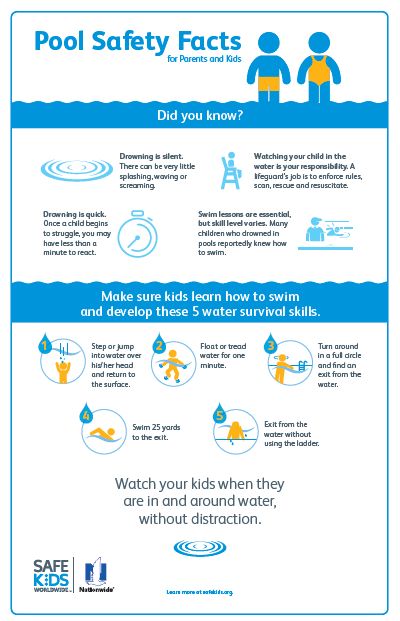 Label all medicines in bold, legible print to prevent misuse. Throw away all medicines immediately after recovery. Write down the phone number of the nearest poison control center. The house should have a bottle of vomit syrup on hand for each child. But you should only give vomit syrup to a child if you have been instructed to use it by your pediatrician, nurse, or poison control center. The dose of syrup varies depending on the weight of the child.
Label all medicines in bold, legible print to prevent misuse. Throw away all medicines immediately after recovery. Write down the phone number of the nearest poison control center. The house should have a bottle of vomit syrup on hand for each child. But you should only give vomit syrup to a child if you have been instructed to use it by your pediatrician, nurse, or poison control center. The dose of syrup varies depending on the weight of the child.
More than a third of drug poisonings are caused by children taking drugs prescribed to their grandparents. Make sure all their medicines are locked up or out of reach of children.
All medicines dispensed by a pharmacist must be in a container that cannot be opened by a child. Do not transfer the drug from one package to another. Never put any substance from the package it was sold in into a package that contained something else. In other words, do not pour plant spray liquid into a soft plastic drink bottle or mug. This is often the cause of serious poisoning.
Keep poisonous substances away from children. The list of substances that most often cause dangerous poisoning in children includes: aspirin and other drugs, poisons for insects and mice, kerosene, gasoline, gasoline, cleaning products, polishing furniture or lighting a fire, all kinds of alkalis for cleaning sewer pipes , toilet bowls, stoves, wintergreen oil and solutions for spraying plants.
Potentially hazardous substances can also be found in the bathroom: perfumes, shampoos, hair strengthening liquids, nail and facial skin care products.
Find inaccessible places in the kitchen and pantry to store cleaning liquids and powders, detergents, drain cleaners, toilets and ovens, ammonia, bleach, stain removers, metal polish, borax, mothballs, liquid for lighters, shoe polish and other dangerous substances.
In your basement or garage, find safe storage areas for turpentine, paint thinners, kerosene, gasoline, gasoline, plant sprays, weed control, antifreeze, and car cleaners and polishes.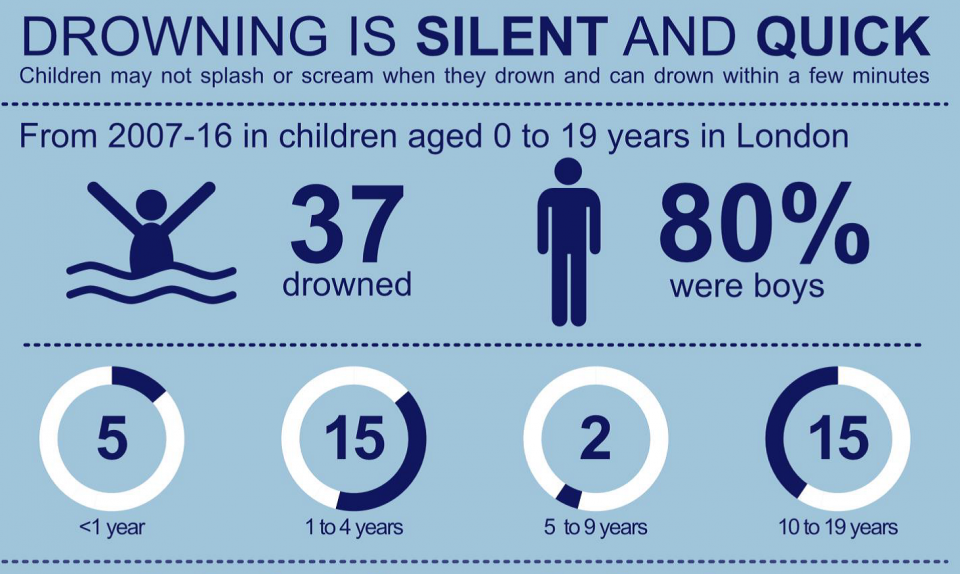 Before discarding containers, make sure they are completely empty and rinse them. Potentially hazardous household cleaning products and medicines in the bathroom and kitchen should be kept out of the reach of children or in cabinets with locks and latches that they cannot open. Hooks and latches can be installed on bathroom doors to keep children safe from dangers ranging from poisoning to scalding.
Before discarding containers, make sure they are completely empty and rinse them. Potentially hazardous household cleaning products and medicines in the bathroom and kitchen should be kept out of the reach of children or in cabinets with locks and latches that they cannot open. Hooks and latches can be installed on bathroom doors to keep children safe from dangers ranging from poisoning to scalding.
Falls
Falls are the sixth leading cause of fatal injuries and also the leading cause of all accidents. Every year, many children under the age of six are involved in accidents due to falls from windows.
Falls from windows are most common during the spring and summer months in urban areas.
1. Most falls occur when parents leave children unattended. Do not leave small children alone .
2. Move all furniture away from the windows so that the child cannot climb onto the sill.
3.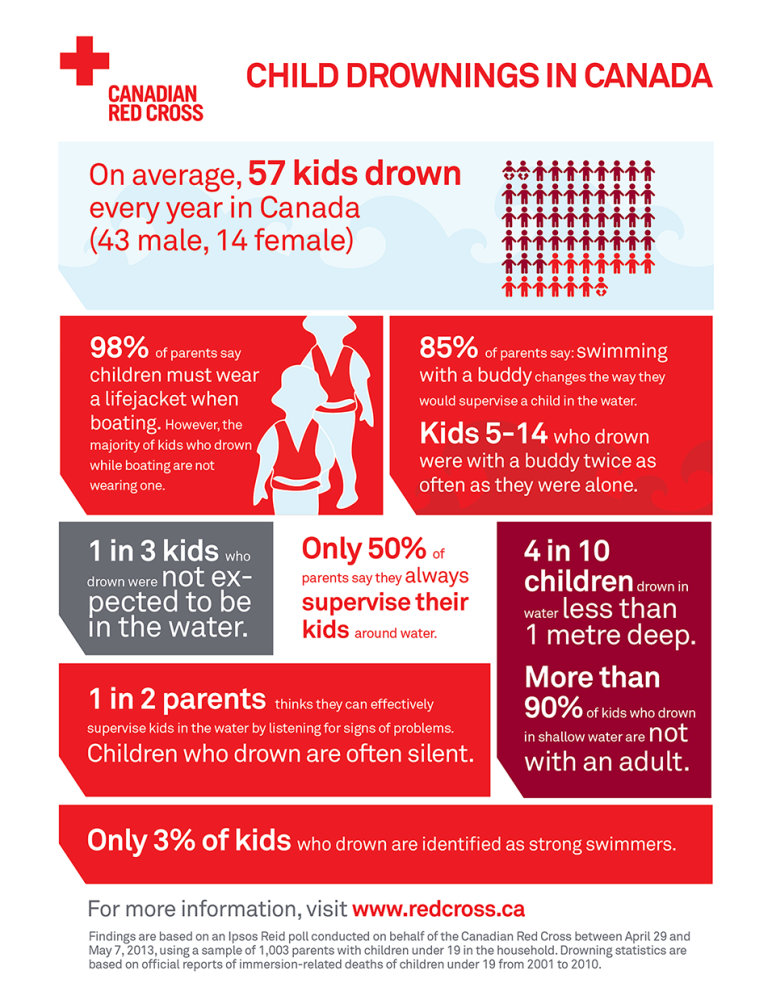 NEVER rely on mosquito nets ! They are not designed for fall protection! On the contrary, the mosquito net contributes to the tragedy, because the child feels safe behind it and leans both on the window and on it. Very often, children fall out with these nets.
NEVER rely on mosquito nets ! They are not designed for fall protection! On the contrary, the mosquito net contributes to the tragedy, because the child feels safe behind it and leans both on the window and on it. Very often, children fall out with these nets.
4. If possible, open windows from the top instead of the bottom.
5. Place special locks on windows to prevent the child from opening the window more than a few inches.
6. Protect the windows by inserting window guards . Lattices will protect children from falling from open windows. You can contact special companies involved in their installation and choose the most suitable for your type of windows.
7. If you show something to a child from the window - always fix it firmly , be prepared for sudden movements of the baby, keep your palms dry, do not hold the child by the clothes.
8. If you are unable to install the fixing and safety equipment right now, you can easily simply unscrew the bolts securing the handles with a screwdriver and remove them higher, use as needed and remove immediately after use.